Veal Scallopini is an easy dinner recipe with tender veal cutlets lightly dredged in flour and seared to a golden brown. It’s cooked lightning fast, in only 2-3 minutes per side, then bathed in a buttery wine sauce with lemon juice and capers. Let’s dive in!
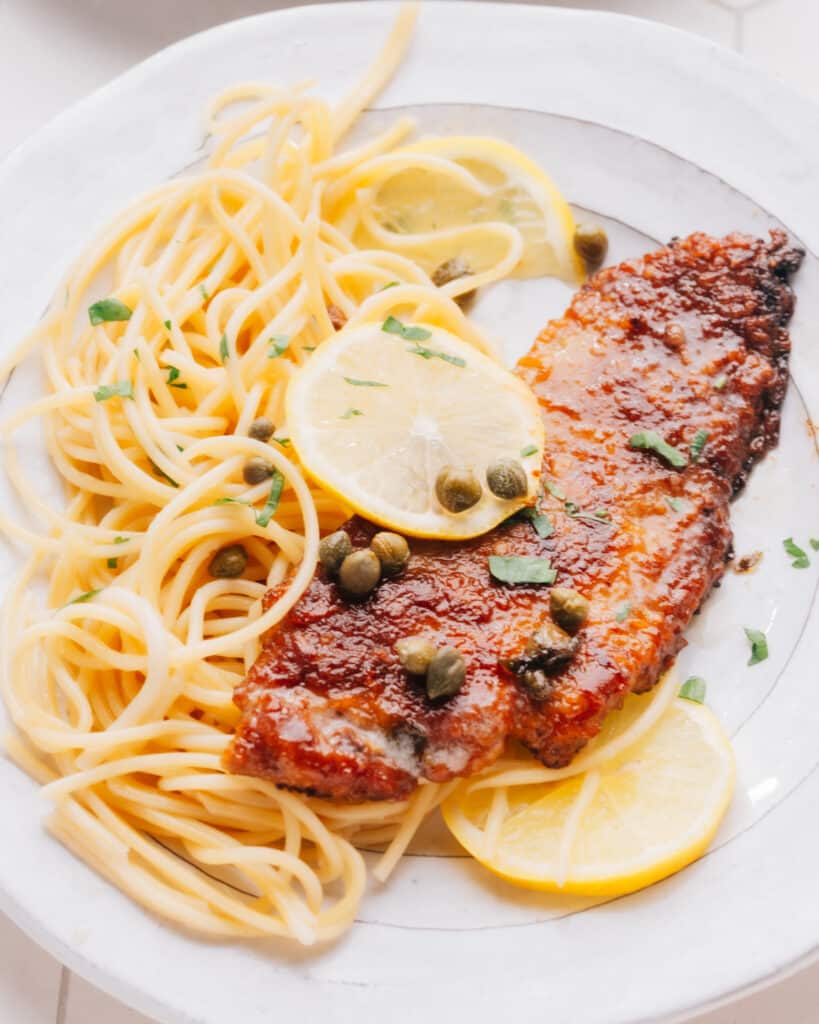
This is a great recipe that is both quick and SO tasty. I especially love the tender meat served with a side of pasta – especially a pile of spaghetti to soak up the buttery, bright sauce.
It’s a simple recipe perfect for a busy weeknight but an elegant dish that’s special enough to serve guests.
Once you discover how fast and delicious cooking veal cutlets is, I’m sure they’ll make it into your regular rotation.
Table of Contents
- What is Veal Scallopini?
- Gather Your Ingredients to Make Veal Scallopini with Piccata sauce
- Grab These Tools
- How to Make the Best Veal Scallopini Recipe: Easy Step-by-Step Directions
- Make Ahead and Storage
- How to Serve This Veal Scallopini Recipe
- 5 Common Mistakes People Make with Veal Scallopini
- FAQs About Making Veal Scallopini
- Fav Italian Recipes to Try Next:
- Veal Scallopini with Lemon Caper Piccata Sauce Recipe
What is Veal Scallopini?
Veal Scallopini is a favorite dish in Italian cuisine that features thinly sliced veal that is dredged in flour, and then sautéed in a mixture of butter and olive oil. Once the veal is cooked, it’s typically removed from the pan, and a sauce is made using ingredients like white wine, fresh lemon juice, capers, and sometimes chicken broth or cream. The sauce is then poured over the cooked pieces of veal before serving.
These cuts cook quickly, making Veal Scallopini a dish that’s both elegant and convenient for weeknight dinners or special occasions. The key to a great Scallopini is using high-quality veal and making sure not to overcook the thin slices, so they remain tender.
What does Scallopini mean in Italian?
“Scaloppine” in Italian means “small scallops,” but in culinary terms, it refers to thinly sliced meat cutlets, usually veal, although chicken and pork can also be used.
What’s the difference between scallopini and veal piccata?
The term “Scallopini” is generally more broad and refers to the thin, pounded cutlets that can be sautéed with a variety of sauces and ingredients. So, while a Scallopini could have a lemon-caper sauce like this piccata sauce, it could also have other types of sauces.
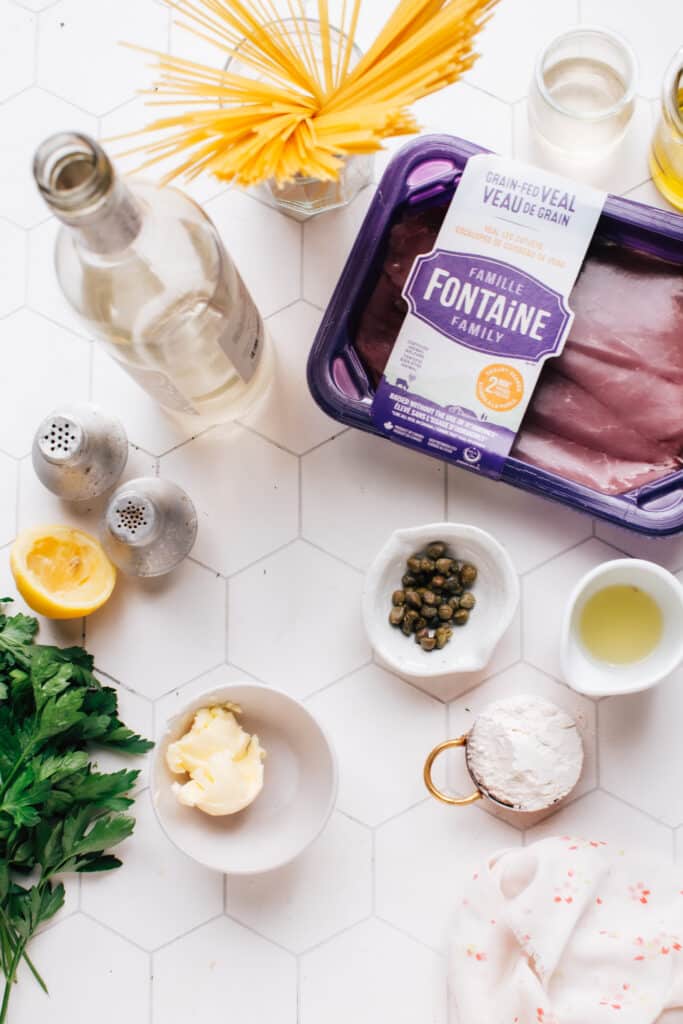
Gather Your Ingredients to Make Veal Scallopini with Piccata sauce
Before you start, it’s good to know why each ingredient is crucial for this flavorful dish.
- Veal Cutlets: The star of the show, these tender, thin slices of veal provide a juicy base for all the other flavors to shine.
- Kosher Salt and Pepper: Basic seasonings to enhance the natural flavor of the veal.
- All-Purpose Flour: A quarter cup flour is used for coating the veal, it helps in creating a slight crust when seared.
- Butter: Adds richness to the sauce and helps in sautéing the veal.
- Olive Oil: A healthier fat that’s used alongside butter for searing the veal.
- Dry White Wine: Adds acidity and depth to the sauce while also acting as a deglazing agent for those tasty brown bits.
- Lemon Juice: Provides a tangy kick that brightens up the whole dish. (See 7+ Simple Lemon Juice Substitutes That Actually Work)
- Capers: Adds a burst of briny flavor to the sauce.
- Fresh Parsley: Provides a fresh, herbal note and also brightens up the dish visually.
Variations and Substitutions
Feel like switching things up a bit? Here are some ideas to make this recipe your own.
- Chicken Cutlets: Or thinly pounded chicken breast can replace veal for a lighter option.
- White Wine Substitute: If you don’t have it on hand, swap out the white wine for chicken stock with a splash of additional lemon juice.
- Cornstarch: If you’re gluten-free, use cornstarch instead of all-purpose flour.
- Additional flavorings: Add a teaspoon garlic powder, a quarter teaspoon pepper, and/or a teaspoon onion powder to make a stronger-flavored flour mixture for dredging. I kept it simple (and it’s delicious as is) but you can always amp it up more if you like.
- Fresh Herbs: Use rosemary, oregano or thyme instead of parsley for a different herbal note.
Grab These Tools
Don’t start cooking without making sure you have these kitchen essentials.
- Large frying pan: You’ll want your biggest skillet for searing the veal slices and making the sauce. A nonstick skillet also works.
- Wooden Spoon: Handy for stirring and for scraping up those tasty bits at the bottom of the pan.
- Meat Mallet: To tenderize the veal cutlets for optimal texture.
- Whisk: For mixing and incorporating the sauce ingredients smoothly.
- Tongs: For flipping the veal cutlets easily during searing.
- Measuring Cups and Spoons: Essential for getting all your ingredient quantities right.

How to Make the Best Veal Scallopini Recipe: Easy Step-by-Step Directions
Here’s a quick rundown of each step so you can have this delicious veal dish on the table in no time. No oven needed!
- Flatten and Season: Pound the veal cutlets for tenderness and season well to start building the flavor foundation.
- Dry it off and dredge in Flour: Use paper towel to pat the surface dry on both sides. Place flour in a shallow dish. Coat the veal lightly in flour for a slight crust and to help thicken the sauce later. Shake off the excess flour.
- Sear the Meat: Quickly cook the veal in a hot skillet for that irresistible golden-brown sear.
- Tent and Set Aside: Keep your seared veal warm and juicy while you make the sauce.
- Sauté and Deglaze: Cook the aromatics and use wine to lift those flavorful bits stuck to the skillet.
- Build the Sauce: Incorporate two tablespoons lemon juice and two tablespoons capers for a tangy, bright taste that’s simply mouthwatering. Whisk in a couple tablespoons butter and it emulsifies to make a slightly creamy sauce.
- Combine and Simmer: Return the veal to the pan and let it soak up all those amazing flavors.
- Garnish and Serve: Sprinkle some fresh parsley for a pop of color and freshness right before serving.
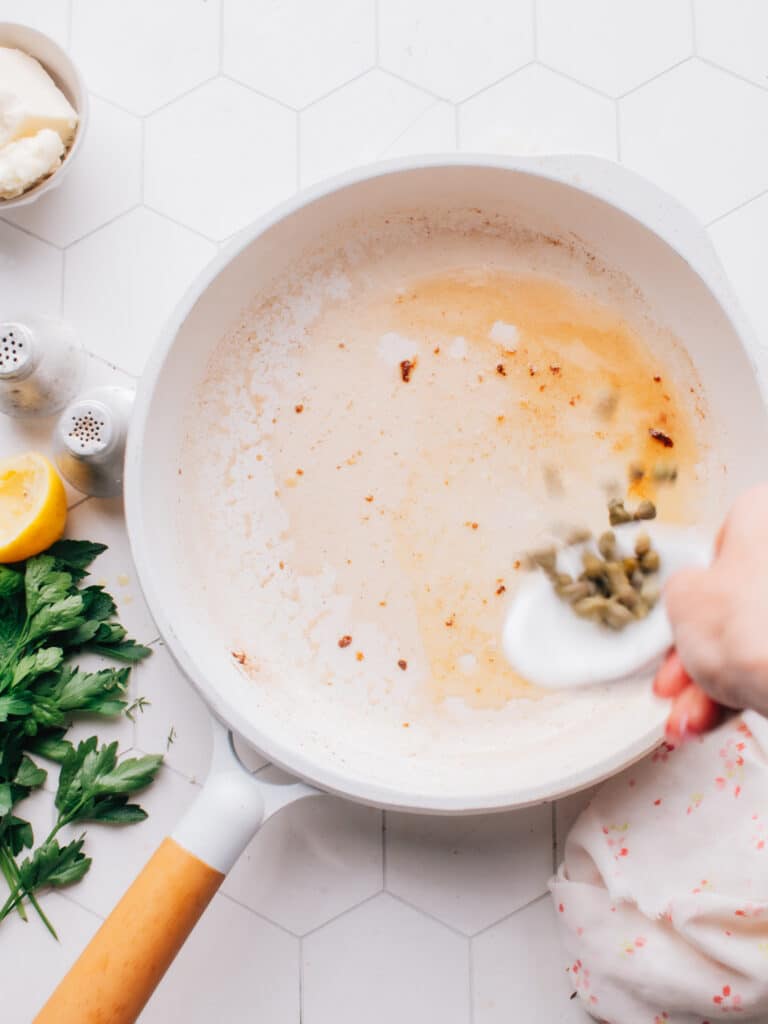
Make Ahead and Storage
Keep the good times rolling with these tips for prepping ahead and storing leftovers.
- Pre-flatten Veal: You can pound the veal cutlets ahead of time and store them in the fridge, saving you a step on the day of cooking.
- Freeze Sauce: If you love the sauce, make a double batch and freeze some for a quick meal another day.
- Leftovers Shine: Believe it or not, this dish is even better the next day. Store in an airtight container in the fridge for up to 3 days.
- Reheat Gently: Use low heat if you’re reheating on the stove, or give it a quick zap in the microwave.
- Repurpose: Got too much veal? Slice it thin and use it in a tasty sandwich with some of the sauce and a fresh salad.
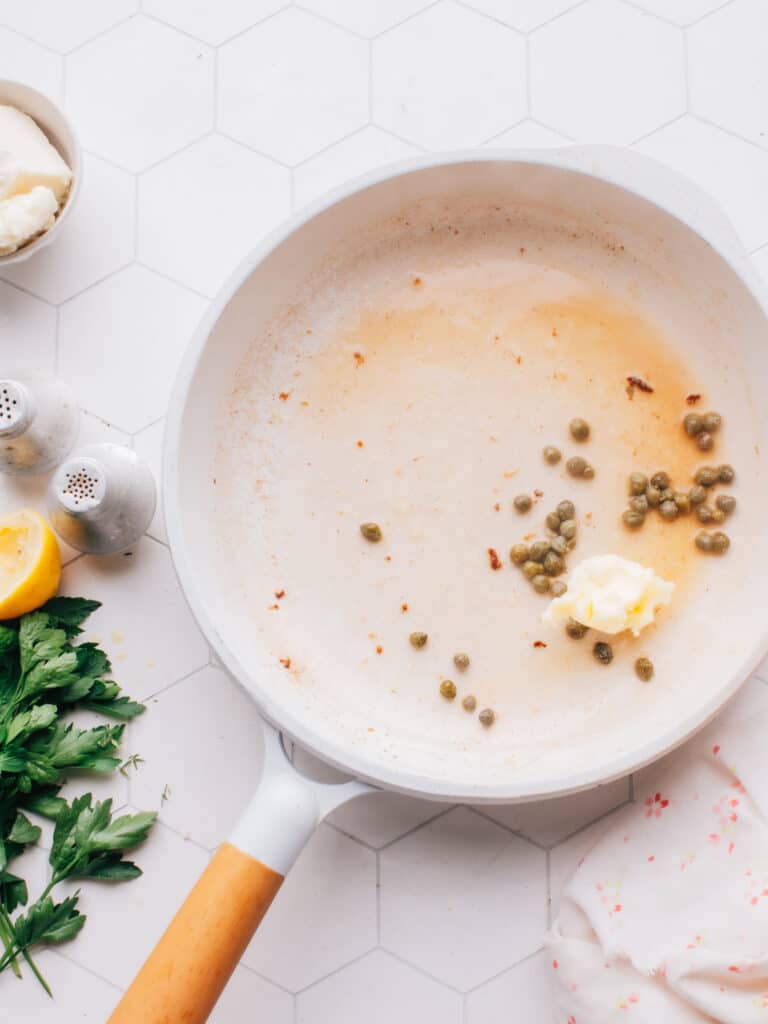
Notes, Pro Tips, and Science-Based Secrets
Maximize tenderness of the veal cutlets with these tips:
- Pounding Matters: Flattening the veal not only tenderizes the meat but also allows for quicker cooking, making this a perfect weeknight dish.
- Watch the time: Veal scallopini is usually very thin, which means it cooks quickly. It’s generally done in just a couple of minutes per side.
- Use a hot pan: Cooking over medium-high heat ensures that the veal sears quickly, locking in the juices without spending too much time in the pan.
- Visual Cues: Look for a golden-brown crust to form on the meat. This usually indicates that the veal is cooked but still tender.
- Batch Cooking: If your pan isn’t big enough to fit all the cutlets without touching, it might be best to cook them in batches to ensure even cooking and prevent overcrowding, which can lead to steaming rather than searing.
- Resting: After removing it from the pan, let the meat rest under a foil tent for a few minutes. The residual heat will finish the cooking process without drying out the veal.
- Use a Meat Thermometer: If you want to be very precise, you can use a meat thermometer. The internal temperature should reach about 145°F (63°C) for medium-rare and 160°F (71°C) for medium.
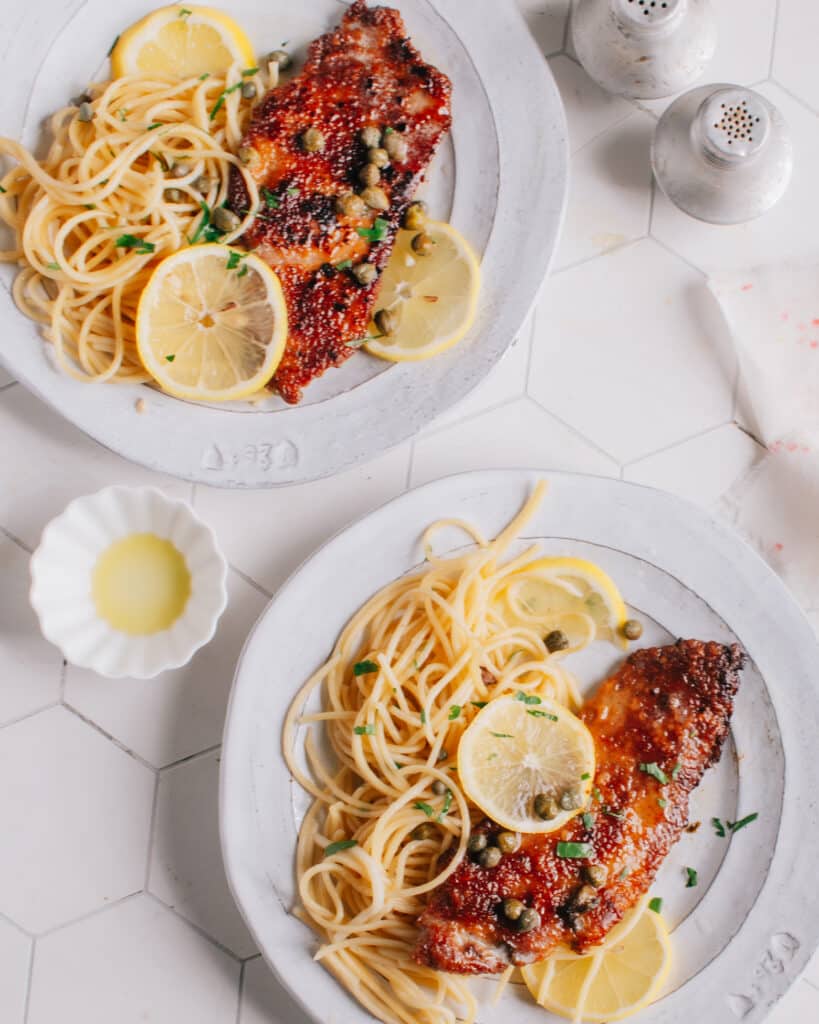
How to Serve This Veal Scallopini Recipe
Now that you’ve whipped up this stunning dish, here are some ideas to make the whole meal a hit.
- Pasta Perfection: Serve over a bed of linguini or fettuccine to soak up all that luscious sauce.
- Go Green: A simple vegetable like broccoli, pan-fried asparagus or mushrooms, or steamed green beans balances out the richness of the veal.
- Crusty Bread: Who can resist mopping up that delicious sauce with a piece of good-quality, crusty bread? I still make this No-Knead Bread recipe once a week.
- Wine Pairing: A glass of the same dry white wine used in the recipe makes for an elegant pairing.
- Simple Sides: Buttered spaghetti or mashed potatoes both make great companions to this veal dish. Couscous with lemon dressing is less traditional but very tasty.
I personally love to serve it with a pile of pasta and additional fresh lemon slices. It’s a real treat!
5 Common Mistakes People Make with Veal Scallopini
- Using Wet Veal: Failing to pat the veal dry before seasoning and dredging in flour can prevent a good sear, leading to less flavor.
- Overcrowding the Pan: This causes the veal to steam rather than sear, resulting in a lack of that golden-brown crust.
- Skipping the Deglazing: Some might skip the wine, but deglazing captures those flavorful brown bits at the bottom of the pan.
- Overcooking the Veal: Veal scallopini cooks quickly. Overcooking can make the meat tough and dry.
- Ignoring Fresh Ingredients: Opting for dried herbs or bottled lemon juice can compromise the fresh flavors that make this dish special.
FAQs About Making Veal Scallopini
All the questions you might have, as well as a little recap in case you were just skimming (I get it!).
Fav Italian Recipes to Try Next:
Absolutely, chicken or pork cutlets are good substitutes but note that cooking times may vary.
A dry white wine, like Pinot Grigio or Sauvignon Blanc, works well.
Veal scallopini is best served fresh, but you can make the sauce in advance and reheat it when you’re ready to serve.
Capers add a unique tangy flavor, but you can omit them if you’re not a fan.
Fresh parsley adds a nice touch, but dried parsley can be used in a pinch.
The bottom of a heavy skillet or even a rolling pin can work as a makeshift mallet.
Veal is beef, specifically the meat from a young calf.
The name “scallopini” comes from the Italian “scaloppine,” which means “small scallops,” alluding to the thin slices of meat.
Veal scallopini typically comes from lean, tender parts like the leg or loin.
Types can include veal, chicken, or pork scallopini, varying mostly in the choice of meat and accompanying sauce.
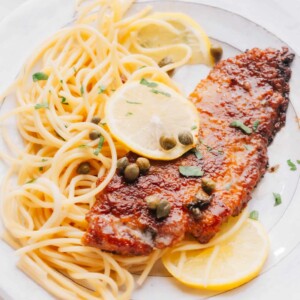
Veal Scallopini with Lemon Caper Piccata Sauce
Ingredients
- 4 veal cutlets lightly pounded with a meat mallet
- ½ tsp kosher salt
- ⅛ tsp pepper
- ¼ cup all-purpose flour
- 4 tbsp butter
- 2 tbsp olive oil
- ½ cup dry white wine
- 2 tbsp lemon juice
- 2 tbsp capers rinsed and drained
- 1 tbsp chopped fresh parsley
Instructions
- Season and Dredge Veal: Flatten cutlets with a meat mallet for optimal tenderness. Use paper towel to pat the surface dry on both sides.Season the veal cutlets on both sides with salt and pepper. Dredge the veal in flour, shaking off the excess.
- Sear the Veal: Heat 2 tablespoons of the butter and the olive oil in a large skillet over medium-high heat. Add the veal in a single layer and cook until golden brown, about 2 minutes per side. You may have to work in 2 batches to avoid overcrowding the pan. Transfer the cooked veal to a plate and tent with foil to keep warm.
- Deglaze the Pan: Pour the white wine into the skillet, scraping up any browned bits on the bottom with a wooden spoon. Allow the wine to simmer and reduce by half, about 2 minutes.
- Make the Sauce: Add the lemon juice and capers to the skillet. Simmer for another minute until the sauce has slightly thickened. Stir in the remaining butter until it melts into the sauce, creating a silky texture.
- Return Veal to Pan: Return the veal to the skillet, spooning the sauce over the cutlets. Cook for 1-2 minutes until the veal is heated through. The internal temperature should reach about 145°F (63°C) for medium-rare and 160°F (71°C) for medium.
- Serve: Transfer the veal to a serving platter. Pour any remaining sauce from the skillet over the top. Garnish with the chopped fresh parsley and serve immediately.
Video
Notes
Recipe Notes:
- Meat Mallet: Using a meat mallet not only tenderizes the veal but also helps it cook more evenly. Just don’t go too crazy; you want it tender, not mushy.
- Batch Cooking: If your skillet isn’t large enough to fit all the cutlets at once, it’s better to cook them in batches. Crowding the pan can cause the meat to steam instead of sear, affecting the texture and flavor.
- Wine Choice: Opt for a dry white wine you’d actually drink. Something like a Sauvignon Blanc or Pinot Grigio works well. The wine will reduce, intensifying the flavor, so make it a good one.
- Capers: Make sure to rinse and drain the capers. This helps to remove excess saltiness, allowing the caper flavor to shine without overwhelming the dish.
- Internal Temperature: Keep an eye on the internal temperature of the veal for your desired doneness. Veal can dry out quickly, so keep that meat thermometer handy.
- Sauce: The sauce may look a bit thin initially, but it will thicken upon standing. Plus, the butter will give it a rich, velvety finish, making it the perfect complement to the veal.
Nutrition
Nutrition information is automatically calculated, so should only be used as an approximation.
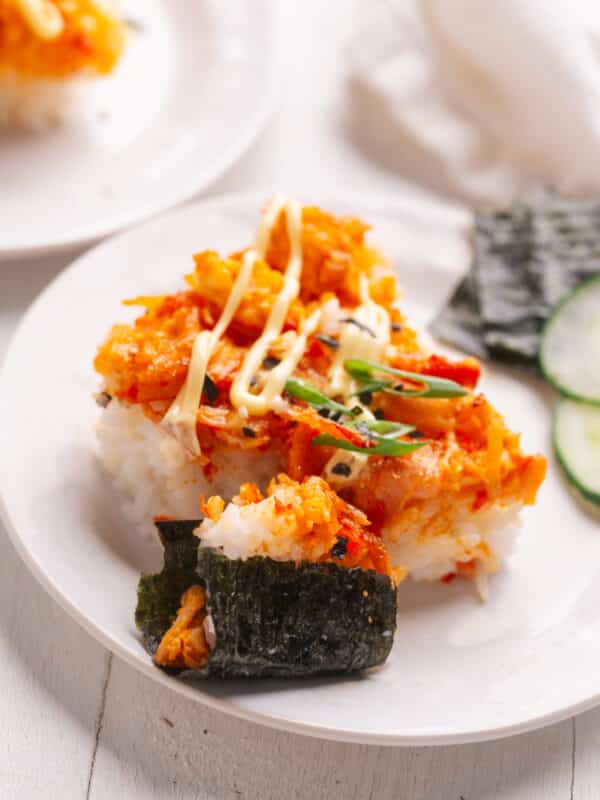

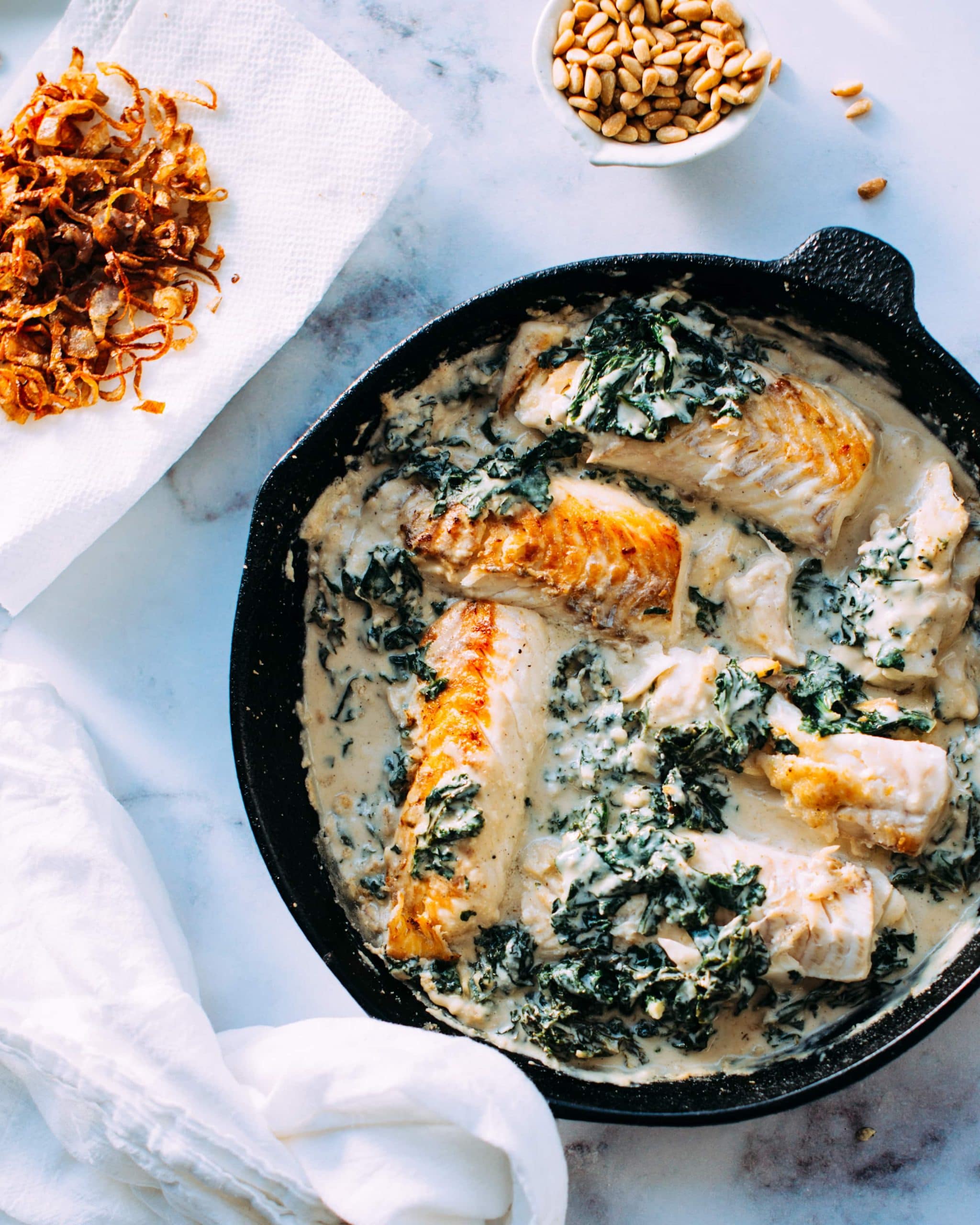










I’ve always been fascinated by different variations of classic dishes! Have you ever experimented with alternative meats, like chicken or pork, in this recipe? I’d love to hear your thoughts on how to adapt it while maintaining that flavour.
Hi Eloise, you can certainly use other kinds of meat! Whatever you choose, make sure to slice it thinly and then pound it out flat. Chicken breast, boneless pork chop or thinly-sliced tenderloin both work well. Even turkey breast.